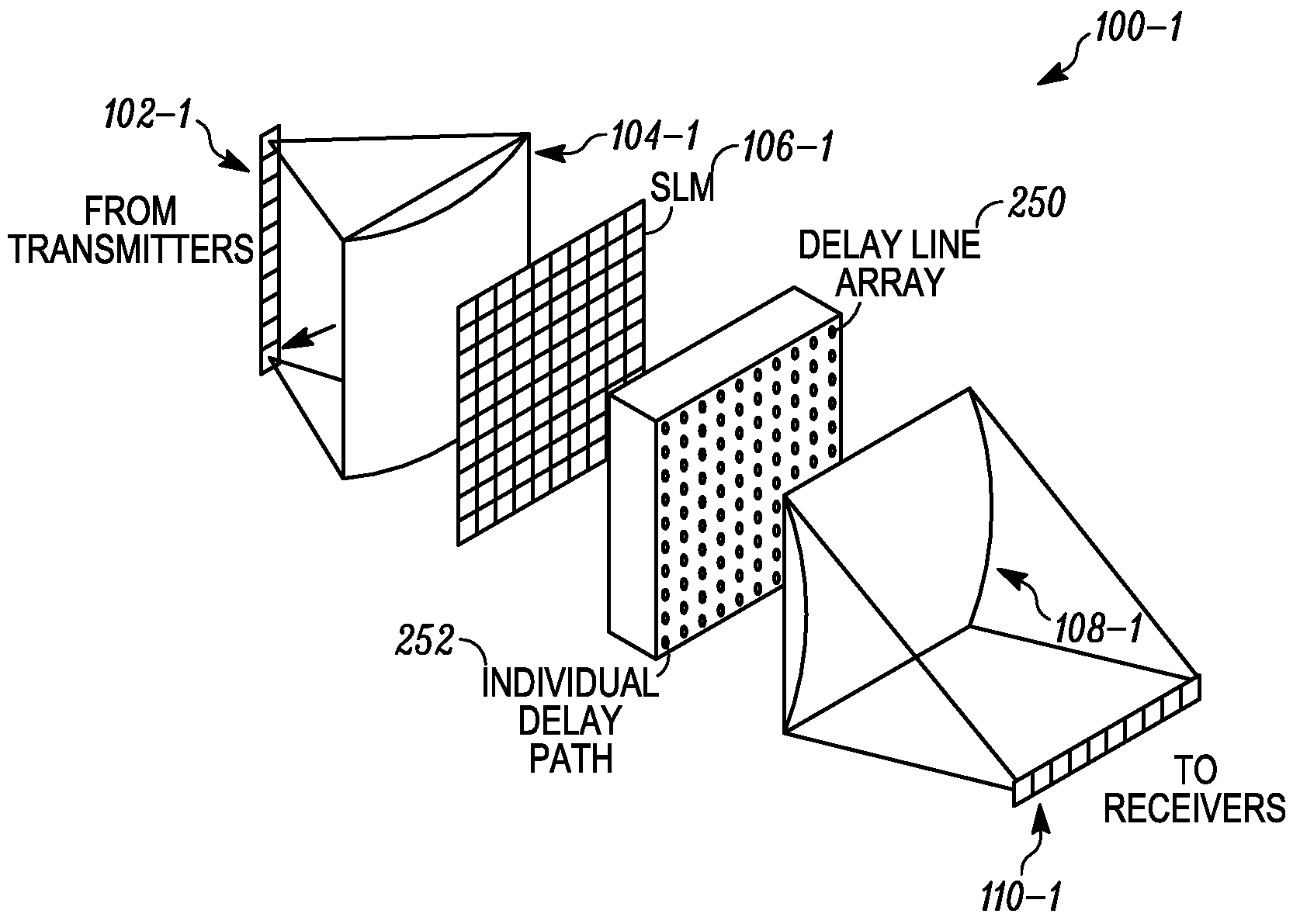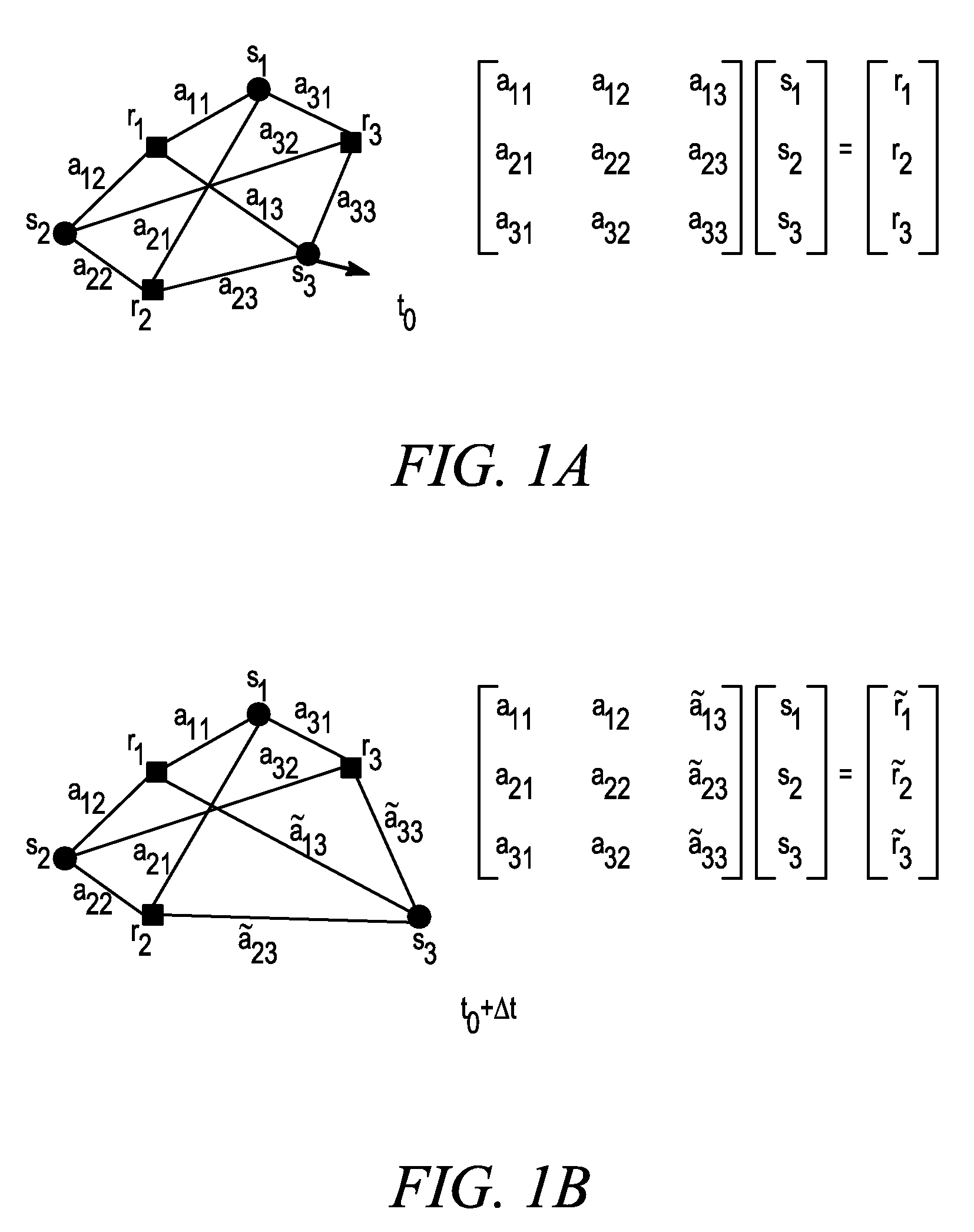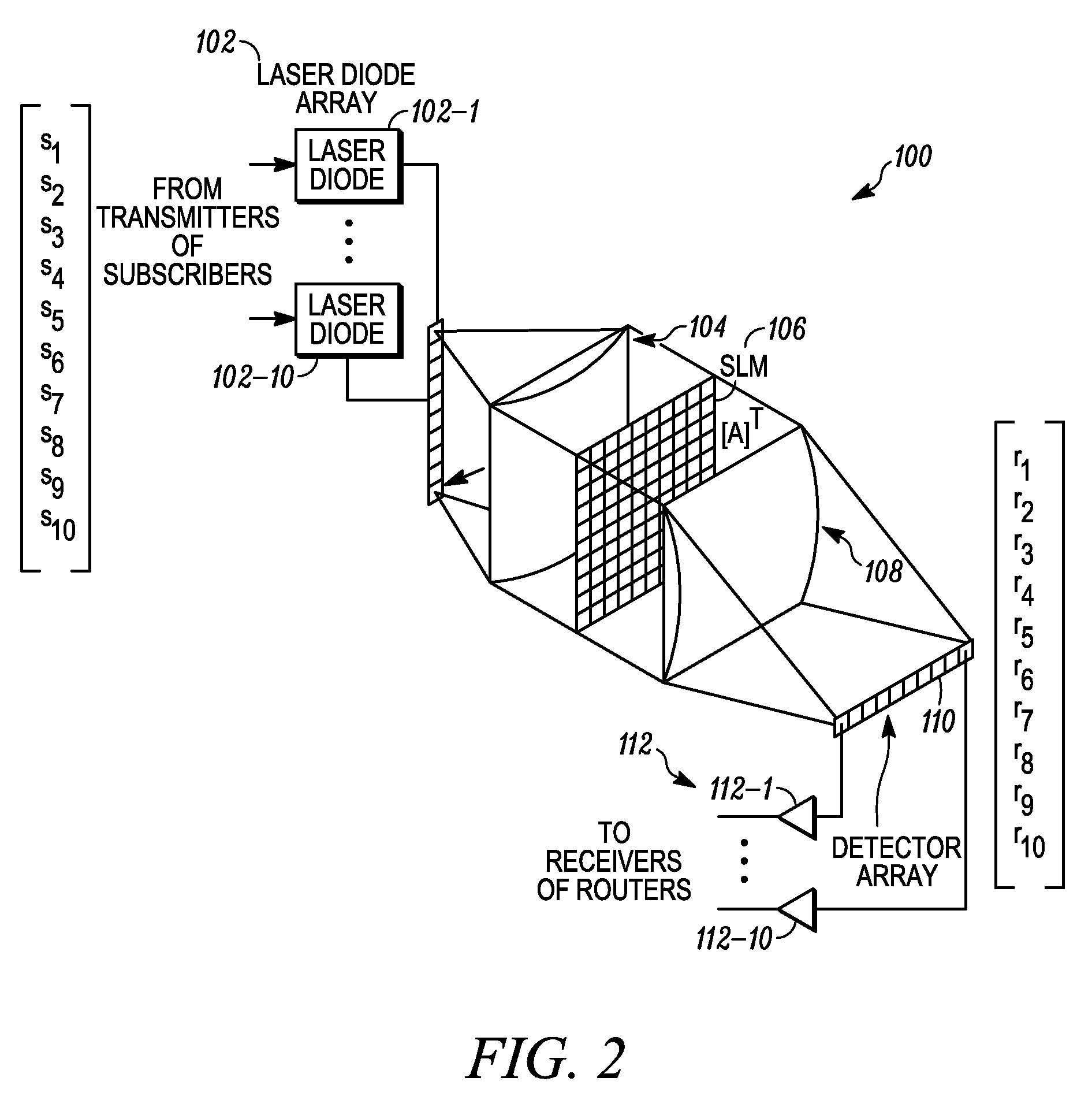System and method for providing simulated hardware-in-the-loop testing of wireless communications networks
a wireless communication network and hardware-in-the-loop testing technology, applied in the field of system and method for providing simulated can solve the problems of general consideration of prohibitively expensive techniques, further exacerbated, etc., and achieve the effect of efficient and effective simulation of hardware-in-the-loop testing of a wireless communications network
- Summary
- Abstract
- Description
- Claims
- Application Information
AI Technical Summary
Benefits of technology
Problems solved by technology
Method used
Image
Examples
Embodiment Construction
[0021]A simple example of the topology of a network, such as an ad-hoc packet-switched communications network of the type described above, is depicted in FIGS. 1a and 1b. As indicated, the network in this example comprises three subscribers, S1 through S3, and three routers, R1 through R3. The subscriber S1 through S3 can be any type of wireless user terminal which can be capable of receiving and transmitting any type of communications signals, such as voice, data or multimedia. The routers R1 through R3 can be subscriber terminals in the ad-hoc network that are capable of acting as routers, or combined router / IAP devices as described above.
[0022]FIG. 1a represents an initial relative geometry between the subscribers S1 through S3 and routers R1 through R3. In the corresponding matrix equation, the vectors containing lower case s represent the respective powers of the signals transmitted by each subscriber S1 through S3, and the vectors containing the lower case r represent the resp...
PUM
 Login to View More
Login to View More Abstract
Description
Claims
Application Information
 Login to View More
Login to View More - R&D
- Intellectual Property
- Life Sciences
- Materials
- Tech Scout
- Unparalleled Data Quality
- Higher Quality Content
- 60% Fewer Hallucinations
Browse by: Latest US Patents, China's latest patents, Technical Efficacy Thesaurus, Application Domain, Technology Topic, Popular Technical Reports.
© 2025 PatSnap. All rights reserved.Legal|Privacy policy|Modern Slavery Act Transparency Statement|Sitemap|About US| Contact US: help@patsnap.com



